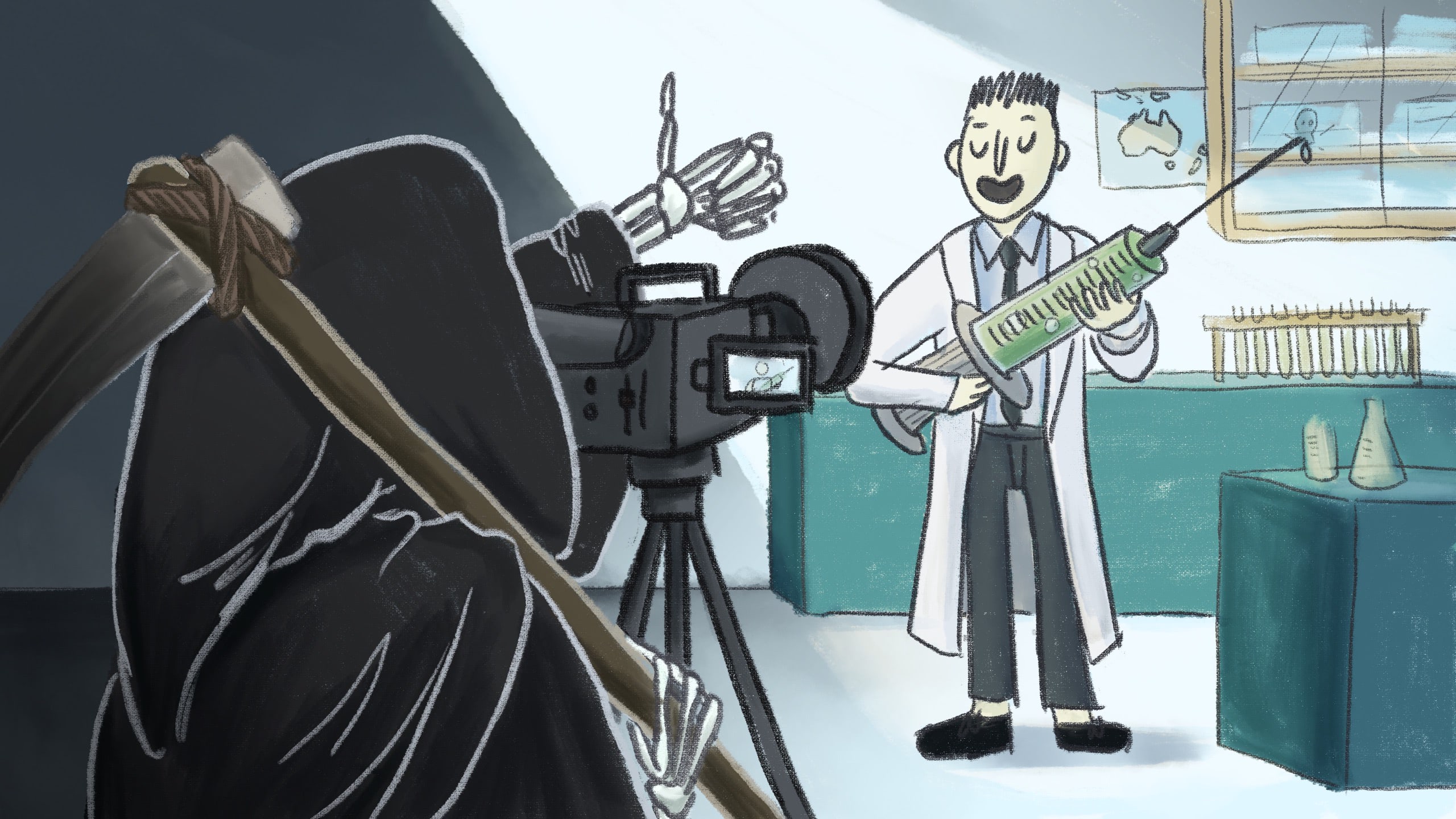
We are not afraid – Australia’s COVID-19 vaccination problem
Australia’s COVID-19 problem is a lack of fear. A considerable section of the population – up to 30% – does not see the need to get vaccinated. Australia’s successful suppression of the virus has landed us with too casual an attitude towards the disease.
Yet a purely fear-based vaccination campaign would be counterproductive.
The infamous 1980’s Grim Reaper ad raising awareness – and terror – about HIV/AIDS was eventually assessed to be a failure precisely because it ramped up the fear factor to paranoid levels and also neglected to deliver a ‘what you can do about it’ message.
Plus, the ads alienated the LGBQIA+ community who felt the ads blamed them for the disease.
When fear is your friend
Fear-based campaigns only work under three conditions:
- The fear depicted is moderate
- The campaign recommends an action that clearly stops the threat and
- People are convinced they can do what is necessary
If any of these are missing, people are likely to lapse into ‘denial’ – they will assume the ‘scary’ thing (COVID-19) will not affect them.
Which behaviour to change?
Let us put individual incentives, social context, skills, and opportunity together to form a framework that allows us to assess the likelihood of a behaviour being changed by a persuasive technique. When looking to influence someone, we should make a behaviour more likely to happen.
So how do we make a behaviour more likely to happen, and how not? To answer this, we need the behaviour framing grid.
This figure gives an overview of which techniques are likely to be useful in overcoming particular barriers.
The vaccine matrix
Research tells us that people are hesitant about vaccines for a variety of reasons. Say the behaviour you want to influence is getting younger people to take the Pfizer vaccine against COVID-19. There is high ability (most young Australian trust science) but low motivation (it is unclear what is in it for them and there is no social pressure as none of their friends are doing it). In that environment, an advertising campaign needs to offer individuals an incentive – and I am not talking about money or guns. What is needed is a motivating, emotional story – either a fear-based campaign or a campaign of how life will be better for us and the country if (most of) us roll up our sleeves and get the jab.
The Kiwis and the French have hit the right note in their upbeat pro-vaccination ads. The message is straightforward: do it for your country so we can open businesses, do it to get a vaccine passport so we can travel, so we can go back to the football, theatre, out for coffee, hug friends on the street (or touch noses if you practice Hongi, the traditional Māori greeting).
If hesitancy to take the vaccine is a situation of low trust (many older Australians are concerned about side effects) but otherwise high motivation (they do not oppose taking a vaccine against COVID-19), then the ad should draw on heuristics to influence behaviour. That is, since everyday people do not have the ability to judge if the vaccine is OK, seeing a likeable celebrity or respected authority allows them to take a shortcut in their deliberations. ‘That person thinks it is OK, I trust that person, so I will do it too.’
Australia’s ad an epic fail
Australia’s official vaccination ad is a dud – in advertising terms it is a message mismatch. It features the former deputy chief medical officer Dr Nick Coatsworth heading out of the surgery and into a café for a takeaway coffee or two.
The ad is misusing Dr Coatsworth’s real value.
Experts like Dr Coatsworth should not be ‘used’ as influencers to motivate people with incentives. In the ad Dr Coatsworth is out at the local shops doing layperson activities (picking up a takeaway and enjoying the freedom that comes with a COVID-free community). That is not a job for a respected authority. Instead, we should use Dr Coatsworth as an expert delivering the message that the vaccine is safe and presenting the facts why.
A nudge in the right direction
Finally, if the situation is one of low ability to judge the necessity and low motivation, then ads need to go for automatic persuasion, social norms or social comparison to influence behaviour. The introduction of green dots on public transport are telling us, or nudging us, into compliant behaviour – limiting capacity without people having to think about it.
‘It’s the science, stupid’
People on the outside may have thought that the Federal Government created their ad scientifically, but in large part they did not – in fact, far from it. Now, the Federal Government has commissioned a new series of ads. Let us hope they stopped revering ‘creativity’ and injected science into their thinking, so they will know why their craft is (in)effective. They can contact me anytime.
This is part of a series of insights related to Coronavirus (COVID-19) and its impact on business.
Tom van Laer is Associate Professor of Narratology at the University of Sydney. He studies storytelling, social media, and consumer behaviour.
Share
We believe in open and honest access to knowledge. We use a Creative Commons Attribution NoDerivatives licence for our articles and podcasts, so you can republish them for free, online or in print.







